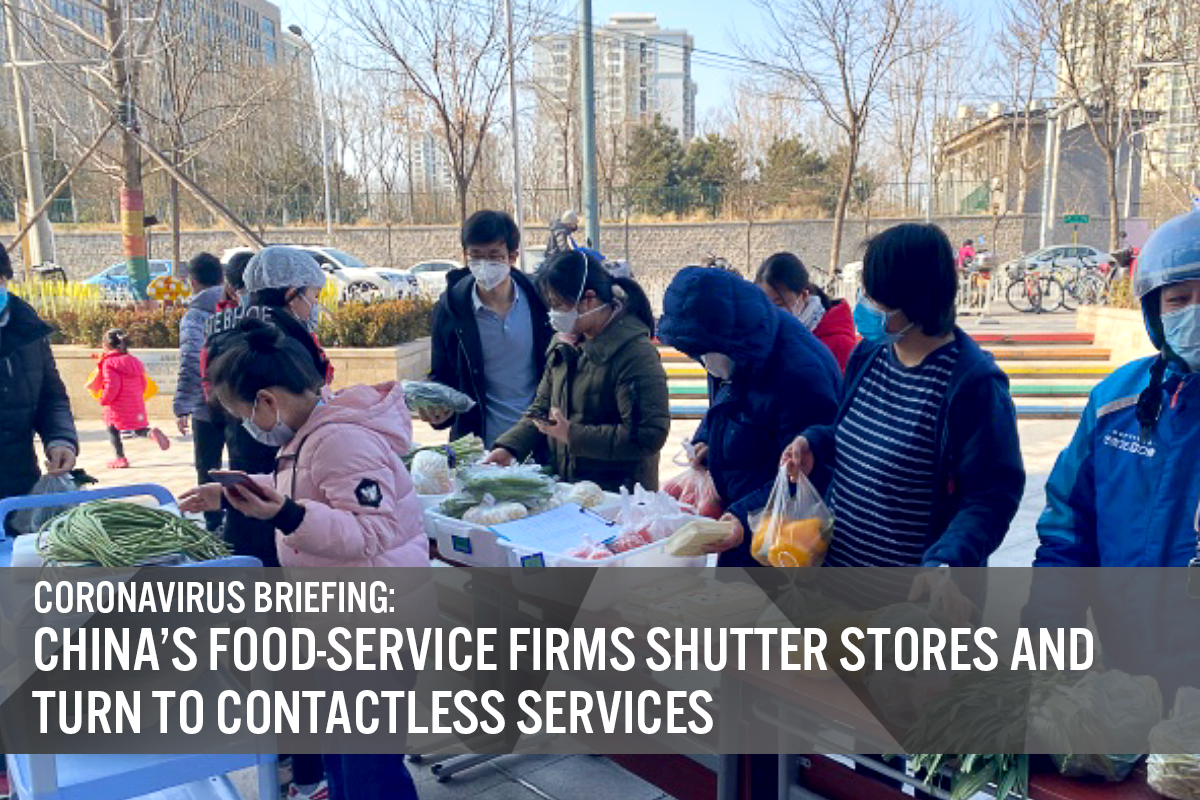
albert Chan
In our Coronavirus Briefing series, we outline the possible economic impact of the coronavirus outbreak in China. This report explores the effects on China’s food-service sector and how food-and-beverage firms have reacted. Watch for further updates on how the outbreak is affecting other parts of the economy in upcoming Coresight Research reports.
What Is Happening in Food Service
According to the National Bureau of Statistics of China, in 2019 total revenue from the food-service sector stood at ¥4.7 trillion, an increase of 9.4% over 2018. Companies in the catering industry generate between 12% and 15.5% of their annual revenue over the Chinese New Year public holiday as large numbers of people dine out with friends and family.
This year, however, many people stayed home, preferring to cook in their own kitchen over a large public place. Some restaurants and cafés temporarily closed of their own accord, while others were compelled to by mall management. Those restaurants that stayed open saw revenue fall 80–90% compared to the same period last year, and we expect the total loss in revenue in the sector during Chinese New Year to be as high as ¥700 billion this year.
[caption id="attachment_103302" align="aligncenter" width="700"]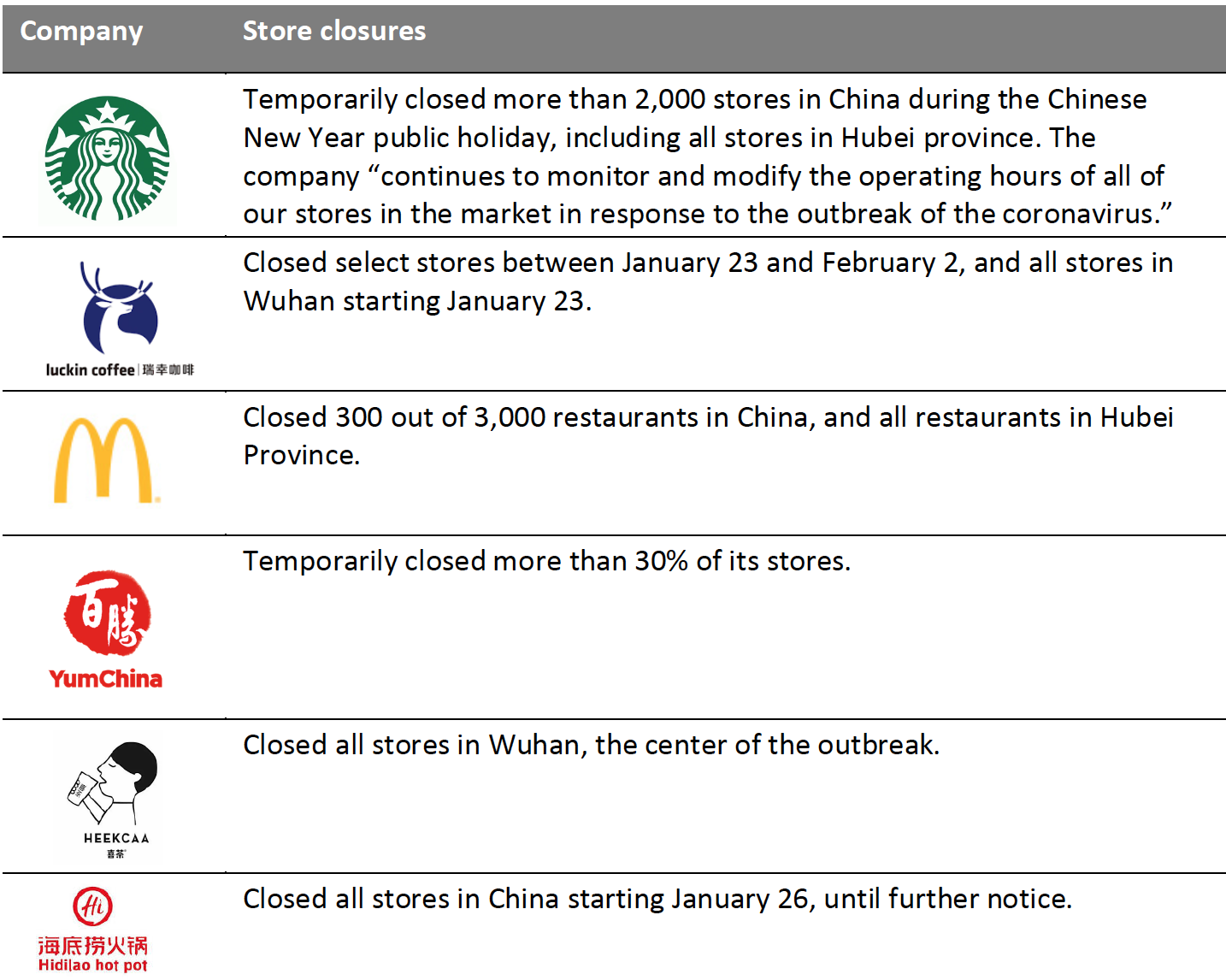 Source: Company reports/Coresight Research[/caption]
Source: Company reports/Coresight Research[/caption]
Xibei Youmian Cun, a popular restaurant that serves cuisine from the northwest of China, closed almost all 400 restaurants and kept only its meal-delivery business operating. The company expects to lose ¥700–800 million in revenue between January 24 and February 24. With the company spending ¥150 million every month on salaries, the CEO says the company will run out of cash in the coming three months if the coronavirus outbreak continues.
How Businesses Are Dealing with the Disruption
Yum China’s KFC and Pizza Hut outlets launched contactless delivery service and contactless in-store pickup, so customers can buy without contacting (or even getting too close) to other people. Using a dedicated KFC app, customers can now choose contactless delivery when ordering online. Once the delivery person arrives, rather than going to the apartment or house, the delivery driver calls the customer, they agree on a location and the delivery person simply leaves the item there and waits for the customer to verify the delivery—at a distance of no less than two meters.
Meituan and ele.me, two leading food delivery companies, have also introduced contactless delivery: The delivery person leaves the order at the customer’s front door or at the apartment building reception.
[caption id="attachment_103304" align="aligncenter" width="700"]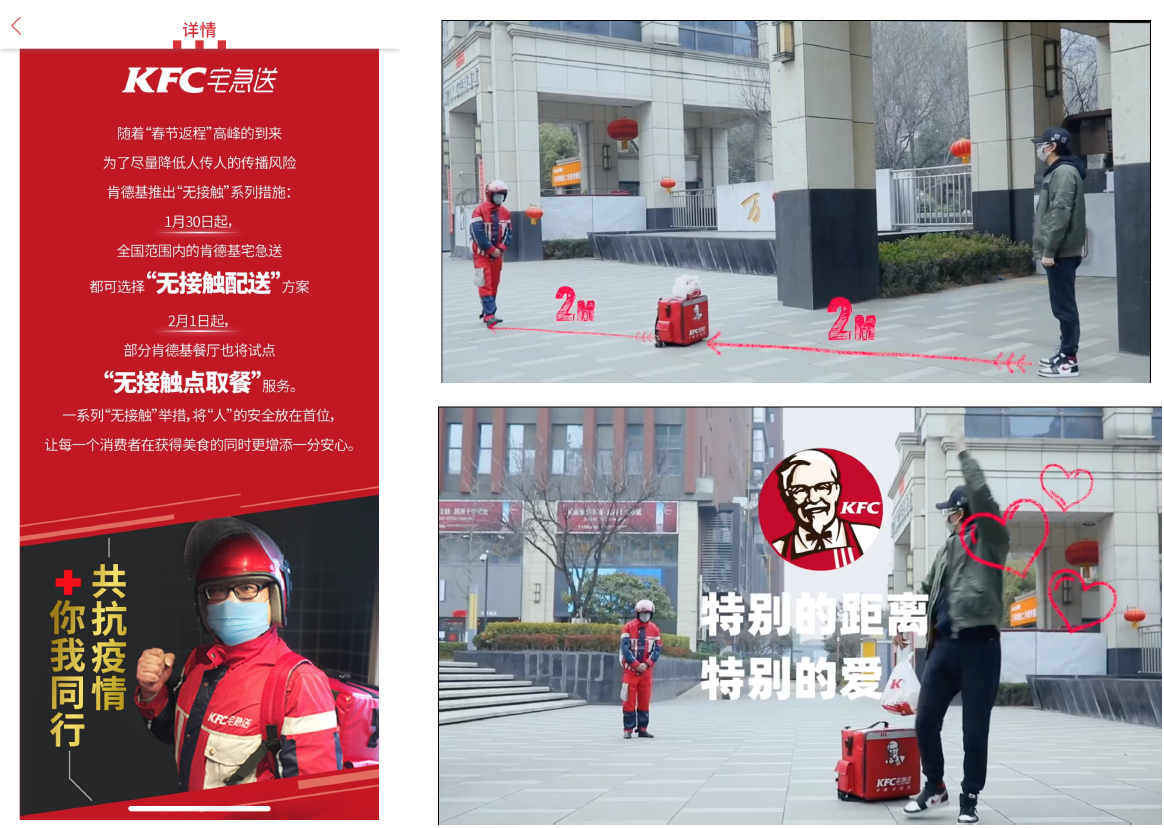 KFC announcement for contactless delivery service (left); the service in action (right)
KFC announcement for contactless delivery service (left); the service in action (right)Source: Company app/Weibo[/caption]
The massive falloff in business has left many restaurants with an overcapacity of labor, for which they still have to pay. Meanwhile, fresh food retailers find themselves short staffed as many migrant workers have been unable to return to work due to suspended transportation links. At the same time, since many people are choosing to stay in and cook at home, there has been a surge in demand for fresh food.
One example of how this is playing out is Mystic South-Yunnan Ethnic Cuisine, a chain specializing in cuisine from Yunnan Province. The company closed all its restaurants from January 24 to 30, but has since started reopening some. However, faced with a severe fall in sales while also having to carry overhead such as staff salaries, the company teamed up with Freshippo, Alibaba’s fresh-food supermarket. Freshippo took on surplus staff from Mystic South-Yunnan Ethnic Cuisine.
[caption id="attachment_103305" align="aligncenter" width="350"]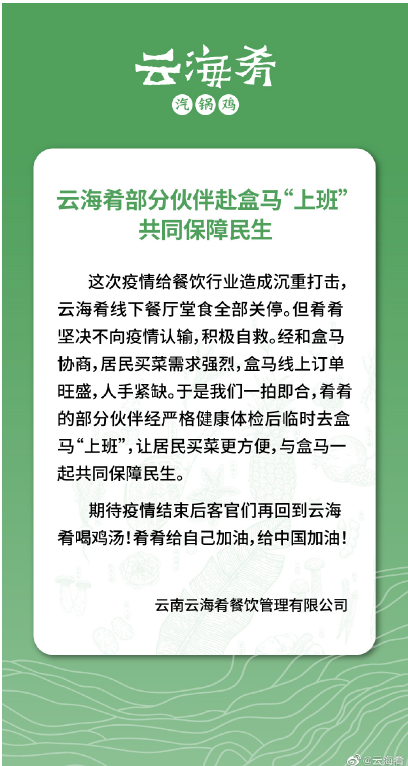 Mystic South-Yunnan Ethnic Cuisine/Freshippo announcement of cooperation
Mystic South-Yunnan Ethnic Cuisine/Freshippo announcement of cooperationSource: Weibo[/caption]
Mystic South-Yunnan Ethnic Cuisine also teamed up with the Hantang Xiaoguan restaurant chain and the Beijing Yuemao Shopping Mall to organize a market for both restaurants to sell surplus vegetables and pre-made meals. This solves another problem China’s restauranteurs face: Restaurants were unable to sell all the food they prepared for what is normally the busiest time of the year (the Chinese New Year national holiday) and now face large losses, as food stock accounts for 30–40% of a restaurant’s costs.
[caption id="attachment_103306" align="aligncenter" width="700"]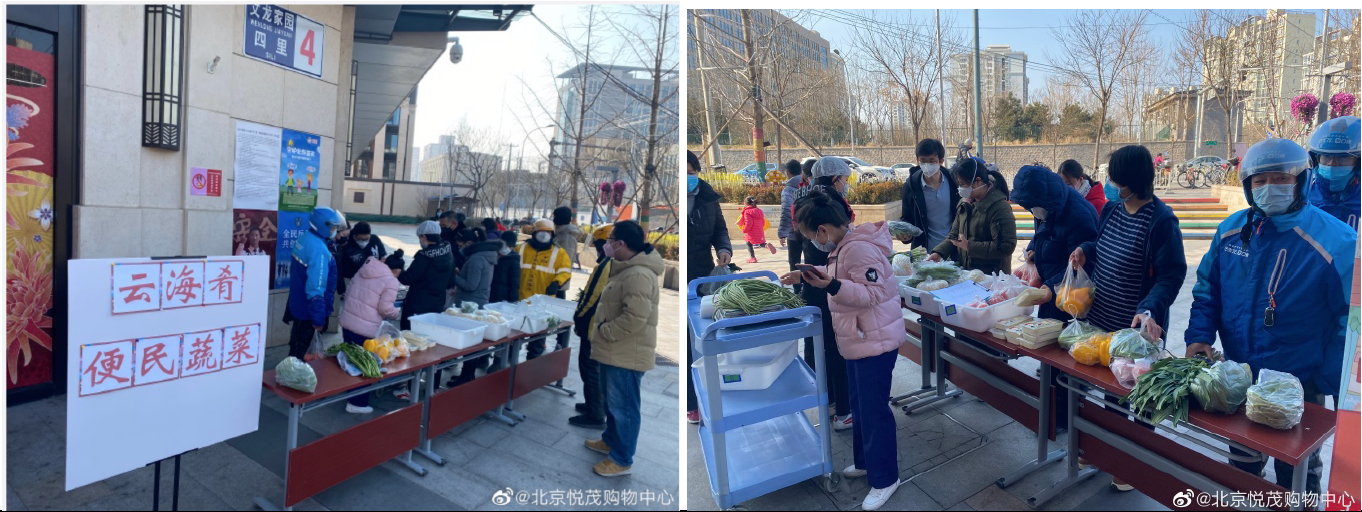 Farmer’s Market organized by Beijing Yuemao Shopping Mall with Mystic South-Yunnan Ethnic Cuisine and the Hantang Xiaoguan restaurant chains
Farmer’s Market organized by Beijing Yuemao Shopping Mall with Mystic South-Yunnan Ethnic Cuisine and the Hantang Xiaoguan restaurant chainsSource: Weibo[/caption]
Other Steps Companies Should Consider
The China National Health Commission predicts the coronavirus outbreak will peak in mid-February, but in reality as long as new cases are being reported, no one can accurately predict what will happen next. In the meantime, we suggest companies consider the following steps:
- Actively monitor the real-time situation in China so they can react quickly and accordingly. Management teams need to reassess the cost of potential store closures and review the financial and operational impact. Some shopping malls have offered rent-free periods to tenants to keep them going. Companies should take full advantage of it.
- Contribute to society, whether through donating funds or through leveraging capabilities, such as providing food supplies and sharing credible knowledge with their consumers.
- Actively engage and communicate with customers on social media, such as Weibo or WeChat, to show empathy and provide support.
- Keep communication with employees transparent and let them know what is happening within the company. When the coronavirus outbreak is over, the employees will be the driving force to help the company to quickly resume operations.